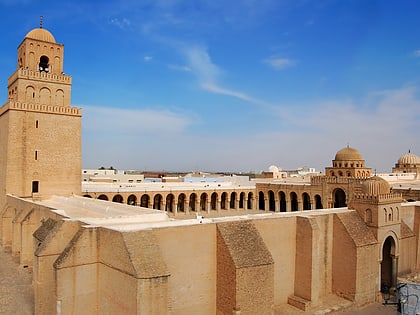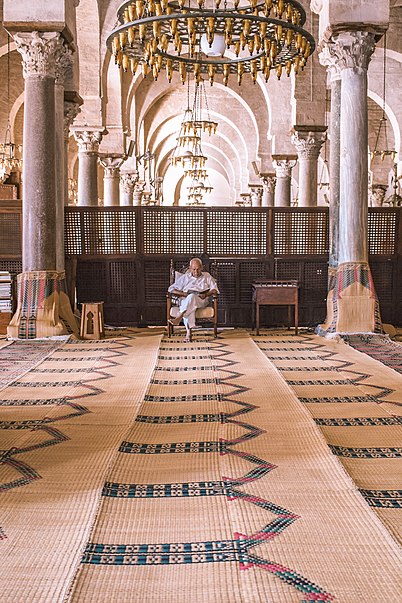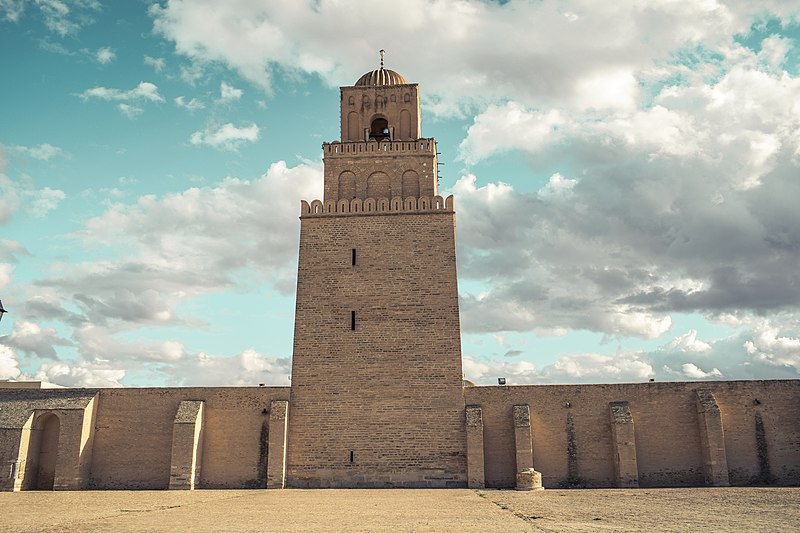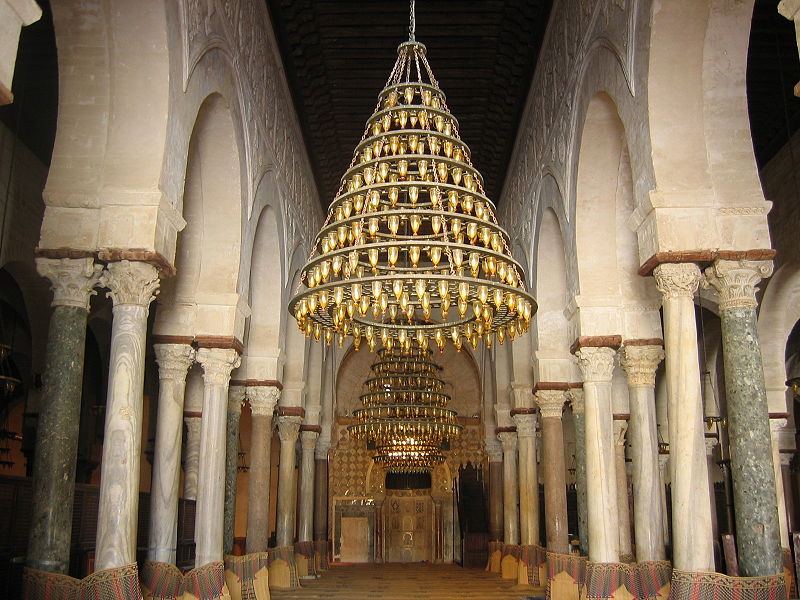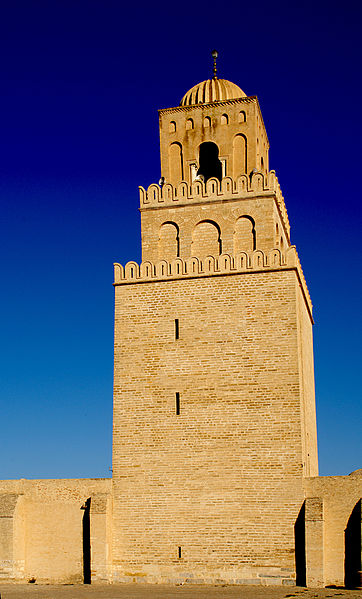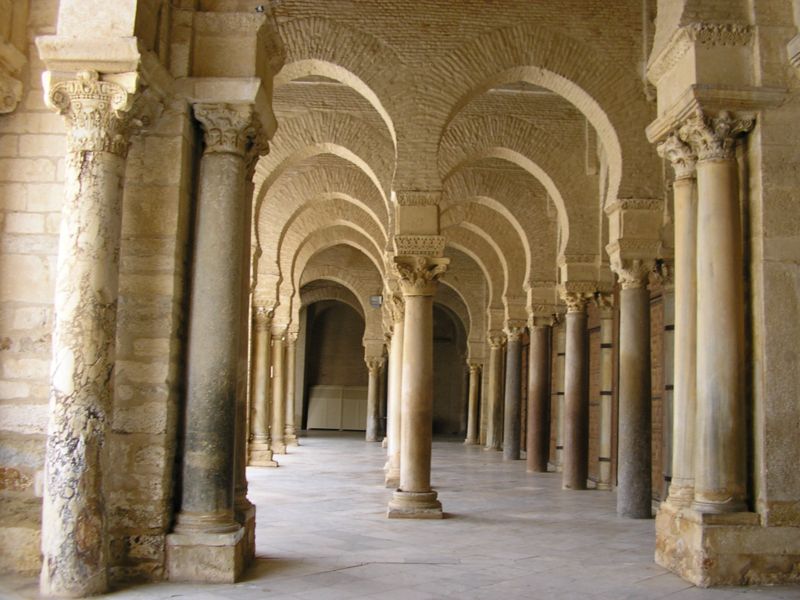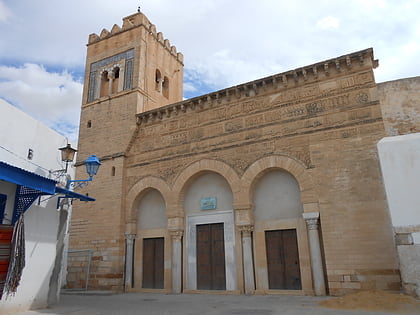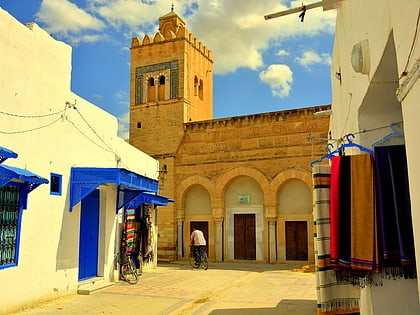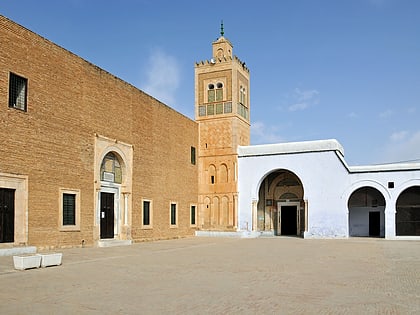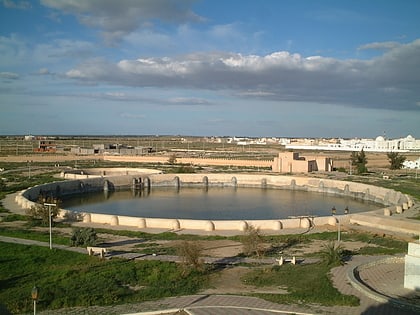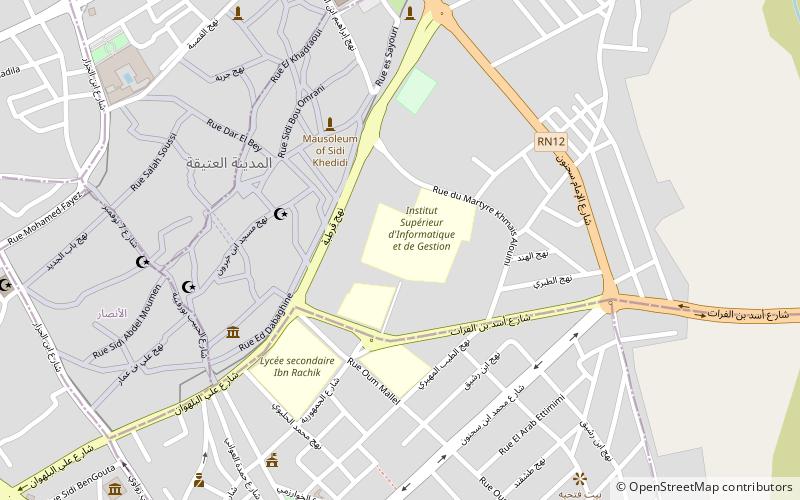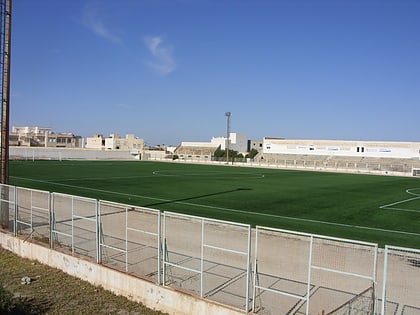Great Mosque of Kairouan, Kairouan
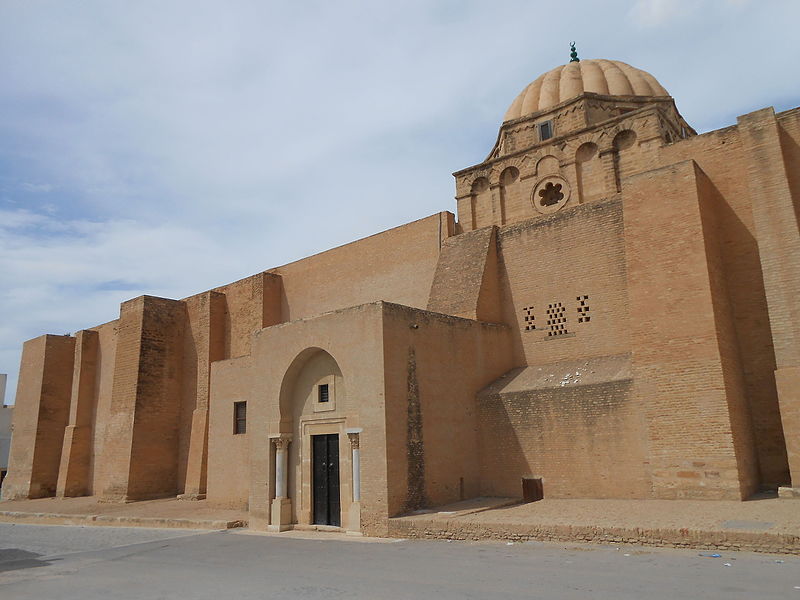
Facts and practical information
The Great Mosque of Kairouan, also known as the Mosque of Uqba, is an architectural and cultural keystone in the Islamic world, nestled in the city of Kairouan, Tunisia. Founded in 670 AD by the Arab general Uqba ibn Nafi, this mosque is a revered sanctuary and has been a significant center for Islamic teaching and Sunni scholarship for centuries.
Renowned for its historical significance and architectural grandeur, the Great Mosque of Kairouan is considered the fourth holiest site in Islam after Mecca, Medina, and Jerusalem. Its sprawling complex covers an area of over 9,000 square meters and is characterized by a robust square minaret, which is one of the earliest standing in the Muslim world and serves as a model for others across North Africa.
The mosque's prayer hall is distinguished by rows of ornate arches and a vast courtyard surrounded by arcades. The interior is a testament to the rich legacy of Islamic art, featuring intricate tile work, wood carvings, and marble columns. Notably, the mosque houses the oldest minbar (pulpit) in existence, which is a masterwork of woodwork dating back to the 9th century.
The Great Mosque of Kairouan has undergone several restorations throughout its history, which have preserved its original design while incorporating elements from different Islamic eras. This harmonious blend of styles reflects the mosque's continuous use and importance over more than a millennium.
Great Mosque of Kairouan – popular in the area (distance from the attraction)
Nearby attractions include: Mosque of the Three Doors, Mosque of the Three Gates / Mosquée des Trois Portes, Mosque of the Barber, Aghlabiden Bassins.
